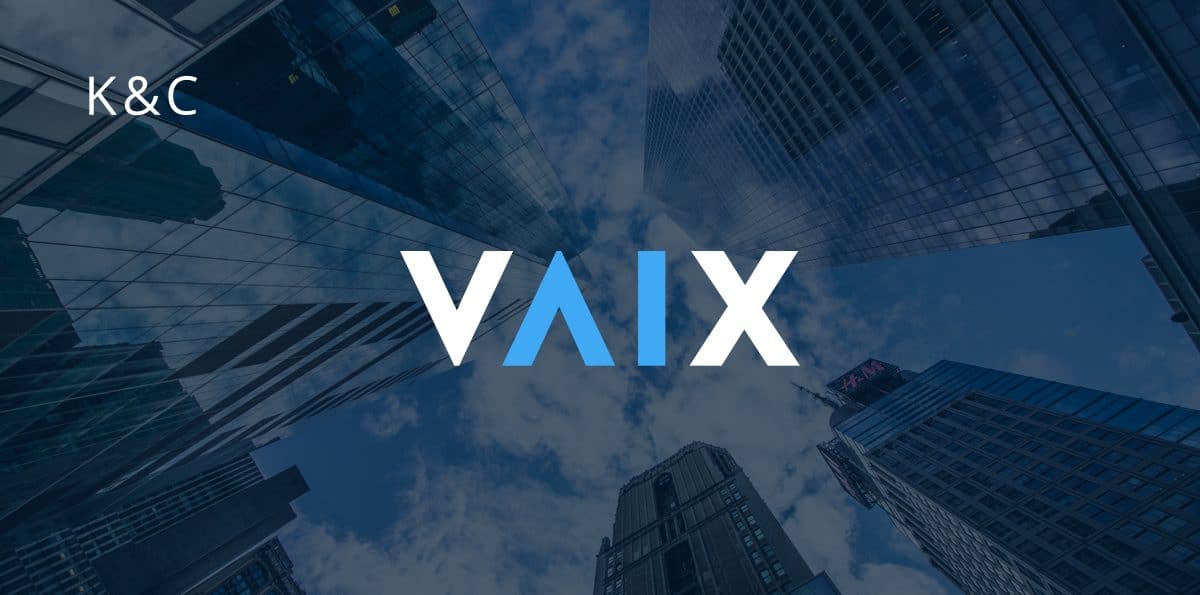Why And How We Opted For Bare Metal Servers For Our Client
A modern enterprise must be efficient if it hopes to be profitable. And in the contemporary world, a key component to business efficiency is a high-quality, full-fledged IT infrastructure which includes a range of services, subsystems, and solutions.
It is this infrastructure that ensures the high performance of a whole application as measured by scalability and fault-tolerance.
In this instalment of our Cloud consulting series, we’ll profile VAIX, a client of K&C for whom we developed infrastructure on bare-metal servers, to share with you our firsthand experience of how having your own infrastructure can create some truly meaningful cost efficiencies.
What infrastructure is best for your project?
Infrastructure is not an ‘off-the-shelf’ solution. It should be thought of as a bespoke tailored suit. What your infrastructure looks like should depend entirely on the specifics of your project with particular emphasis on its projected growth, functions and goals.
On project involves working with Big Data; for another fast message-based communication is key. If high loads are expected they will need to be distributed between more servers. Or if you deal with increasing volumes of data then you need a fault tolerant database to keep that data safe even if half of your servers have failed.
VAIX Case Study
In VAIX case, the client began with a small database and a server. VAIX uses AI algorithms to help their clients better target e-commerce offerings. With a growing number of clients and traffic we needed to upgrade their infrastructure in a way that would combine speed and 100% up time. VAIX needed a custom infrastructure solution. So what did we do:
We added one more server to balance the load on their application. The next step was a new fault-tolerant database that would provide capacity of 50 terabytes+. Another solution for VAIX’s infrastructure was the usage of video cards, which run at seven times the speed of a standard processor.
VAIX’s needs were met – job done!
Two Options – One Choice
Based on the needs of the client, the solution can be built both on the platform of well-known manufacturers and with the help of the local vendors, who are well aware of the specifics of the business.
The help of local vendors allows for the development of everything from scratch and can be a good option for your business.
Alternatively, the infrastructure can be cloud based. Google Cloud and AWS services are currently the most popular providers of cloud infrastructure, especially for larger enterprises.
Both Google Cloud and Amazon’s AWS have slightly differing strengths and weaknesses. However, if you lack a very clear idea of your business’s current and future needs, you could end up paying much more than you need to by using an GC or AWS infrastructure.
If your business has larger scale needs a cloud solution is likely to be the best bet. Which one you choose shouldn’t make a big difference on pricing, with structures similar.
However, for a young business with limited infrastructure capacity requirements, physical servers rather than cloud-based infrastructure can be a better solution.
Pros of Physical Servers
- Dramatically Lower Price. They can be considerably cheaper compared to a cloud solution for smaller load requirements. For a typical AWS solution, you’ll pay around $5,000 per month, while the cost for almost the same set of functionality on a bare-metal server would be just $1,000. Why pay 500% more for the same thing?
- Competitive Fault Tolerance Level. If you hire a professional developer or have the right skillset in-house you can create your own “AWS”. And when it comes to the same level of fault tolerance, physical servers are by no means worth more than cloud ones.
- Instant Realization. With bare-metal servers, you have no restrictions in terms of development. Cloud servers allow for a limited number of development updates.
Cons of physical servers
- Inappropriate for volatile traffic. Physical servers are only a good solution if the level of traffic and load which can be expected is relatively clear. For example, you have a winter clothing e-commerce site. It’s easy to predict that during the summer months traffic will be at its lowest level. But in winter the traffic footfall would be expected to multiply several times over. Cloud servers like AWS mean you can scale server capacity up and down as required, paying more in winter and less in summer. If you use bare-metal servers, adapting for volatile capacity requirements will necessitate significant customization.
- Long development process. Building the right infrastructure on bare metal servers involves meticulous attention to detail and preparation. They can be ideal for the creation of literally anything you may need for your infrastructure but require devotion if you want to be confident that each process functions well and is relevant.
Bottomline
Cloud infrastructure is becoming more flexible and there may well come a day when physical servers never make sense. However, that day has not yet arrived and there is still a place for bare metal servers under some circumstances. And there are other circumstances where a hybrid bare metal server and cloud infrastructure might offer the optimal solution to your need.
We hope that this article helped you gain some insight into what might be the best solution for your organisation’s needs – bare metal server, cloud or hybrid. If you would like to discuss any more specific details or have any questions, please do get in touch.







